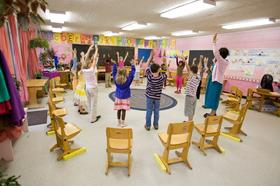New Hope Academy is a non-traditional private school. NHA is a place where ALL students can succeed! NHA provides individualized education, not only for students with documented individualized education plans (IEPs), but for all of our students. Each student progresses at his or her own pace, yet collectively they are challenged to stretch beyond their comfort levels and achieve beyond their expectations.
We have a campus in Yardley and in Doylestown, PA.
Quick Facts (2025-26)
- Grades: 6-12
- Enrollment: 106 students
- Acceptance rate: 95%
- Average class size: 3 students
- Application Deadline: None / Rolling
- Source: Verified school update
School Overview
Religious Affiliation
Grades Offered
Grades 6-12
Offers Post-Graduate Year
Yes
ADD/ADHD Support
Yes
Learning Difference Programs
Yes
Learning Programs Supported
ADD, ADHD, LD, OCD, ODD, Anxiety Disorders, Autistic Spectrum Disorders
Year Founded
2000
Summer School Offered
Yes
School Calendar
Student Body
Total Students
106 students
Student Body Type
Co-ed
% Students of Color
23%
State avg.: 27%
Students by Grade

Academics and Faculty
Total Classroom Teachers
39 teachers
Student-Teacher Ratio
3:1
National avg.: 13:1
Average Class Size
3 students
Number of AP Courses
4 courses
Classroom Dress Code
Casual
Tuition and Acceptance Rate
Admission Deadline
None / Rolling
Tuition Notes
Tuition is based on a case to case basis.
Acceptance Rate
95%
National avg.: 81%
Admissions Director
Kathleen Rosso Gana
Application URL
Extracurriculars
Total ExtracurricularsTotal Extra-curric.
12 extracurriculars
ExtracurricularsExtra-curric.
Club or Organization:
Arts and Music Programs:
Recreational Athletic Programs:
Chess ClubHumanitarians Club
Arts and Music Programs:
3D Animation ClubArt Club
ChoirDrama Club
Newspaper ClubTheater
Yearbook Club
Recreational Athletic Programs:
Disk GolfRunning Club
Yoga
School Notes
- School Motto: A place where All students can succeed
- Partnering with school districts forout-of-district placements.Accepting students privately placedby their parents.
- Kids Not Thriving in Traditional School Teens Who Feel They Just Don`t Fit Gifted & Creative Individualists whose needs are not being met Students with Learning and Emotional Disabilities, Behavioral & Anxiety Disorders and Autistic Spectrum Disorders Grades 6-12 Granting High School Diplomas Open Enrollment Free Consultations State Standards, IEPs & Transitional Plans Preparation for College & Trade Schools
Source: Verified school update
Frequently Asked Questions
What is the acceptance rate of New Hope Academy?
The acceptance rate of New Hope Academy is 95%, which is higher than the national average of 81%.
When is the application deadline for New Hope Academy?
The application deadline for New Hope Academy is rolling (applications are reviewed as they are received year-round).
School Reviews
Endorse New Hope Academy. Endorsements should be a few sentences in length. Please include any comments on:
- Quality of academic programs, teachers, and facilities
- Availability of music, art, sports and other extracurricular activities
- Academic or athletic awards
Recent Articles

Student Success Predictors at Community Colleges
A practical guide to student success predictors at community colleges for private school advisors helping graduates navigate two-year pathways.

Career Pathways with Community College for Private School Grads
Explore top career pathways with community college for private school graduates, including high-demand jobs, transfer options, and 2025 workforce trends.

Navigating the FAFSA & Financial Aid Timeline for Community College
Learn how to navigate FAFSA and financial aid timelines when starting at community college — from application to disbursement in 2025.







